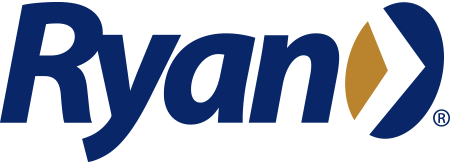


ARIA Synthetic Plants
11/09/2024


UK–Germany Bilateral: Collaborative R&D Round 4
18/09/2024Welcome to grants 101 where we explain everything you need to know about grant funding, including what grant funding is, the difference between capital and research and development (R&D) grants, how much funding a grant can provide, the benefits of R&D grant funding, and how you can apply for R&D grant funding.
What Is Grant Funding?
A grant is typically a sum of money given by one entity (e.g., company, foundation, or government) to an individual or company to facilitate a goal or boost performance.
There are two types of grants: capital and R&D.
Capital grants subsidise the cost of capital items, such as buildings, extensions, equipment, and machines. They also support operational costs such as recruitment and business planning. Using capital grants enables bigger, more impactful projects to be realised by covering capital expenditure (e.g., buildings or machinery), with project success often being predicted on job growth.
R&D grants support high-growth potential, high-risk, technology projects. R&D grants reduce the financial risk of your project, whilst increasing return on investment and subsequent business growth, all without releasing any equity. A sum of money is given by the government, or another organisation, for a specific purpose or project to achieve a given aim.
How Much Funding Will a Grant Provide?
The simple answer is – it varies.
Every grant scheme has its own criteria, so there’s no standard grant available. Typically, grants range from £25,000 up to several million depending on which grant scheme you’re applying for, your project maturity, and the size of your business.
Some healthcare funds such as SBRI Healthcare or National Institute for Health and Care Research (NIHR) offer 100% funding; however, most funds have invention rates (typically 50–100%) based on your business and size. For example, small and micro-organisations are eligible for a higher funding intervention rate than medium or large organisations. An intervention rate is the amount of funding a grant will provide. For capital grants, this is usually 20–40% of the total project costs, and for higher-risk R&D grants, it is 50–100%.
It’s important to remember that grants are typically paid in arrears of actual costs being incurred and paid, so you won’t receive any money until the end of the first quarter after your project has begun.
What Are the Benefits of R&D Grant Funding?
Non-dilutive funding (meaning you retain equity within your business) can significantly accelerate project time frames and markedly reduce a product or service’s time to market, beating the competition and establishing first-to-market status.
Other benefits include:
- No debt – the grant will cover your project costs
- No equity requirements – you retain control
- Collaborations with partners opening up access to new technologies, techniques, and expertise
- Transformative impact – with grants available typically between £50k–£4m and at an intervention rate of 50–100%
- Attractive to investors – reducing risk
“Grant funding allows organisations to unlock projects that sit outside the ordinary; it allows [mitigated] risks to be taken whilst pushing the research and technology envelope. It can also bring consortia together in unique ways to address problems collaboratively, all whilst being a grant that does not need to give away any equity or require any interest to be repaid.”
– Jon Williams, Senior Director, Ryan
How Do I Apply for R&D Grant Funding?
Grant funding is typically applied via a competitive process and awarded to those that demonstrate an innovative idea with an opportunity to deliver a return on investment to the UK economy.
To apply, you must follow the application of the grant funding body, which can include expression of interest, multistage applications, and interviews before the funder decision has been made and successful projects can start. Because R&D grants are paid in arrears, you won’t receive any money until the end of the first quarter after your project has begun.
Use the Technology Readiness Level to understand the maturity of your technology and whether you’re ready for grant funding.
Find live funding opportunities here. We recommend a minimum of six weeks to develop a grant funding application (allowing plenty of time for reviews and edits). Post-submission, it typically takes 1.5–3 months, depending on the funding competition, to determine whether you’re successful or not.
Speak to an Expert
At Ryan, we make it possible. We know what it takes to be successful in securing funding, and we’ll guide, advise, and support you through the grant writing process giving you more time to focus on your business.
We have substantial sector expertise, the ability to upskill at pace in new technologies, and experience working with companies of all sizes. Get in touch with our team today to find out how Ryan can help you.

